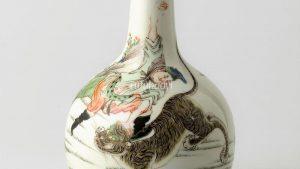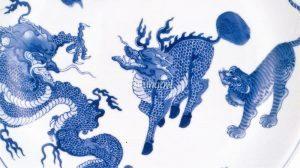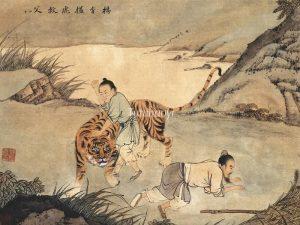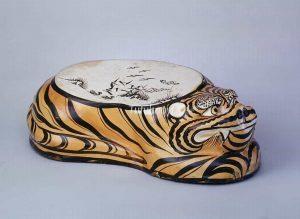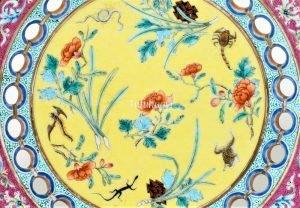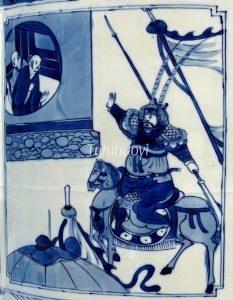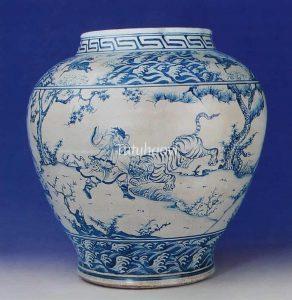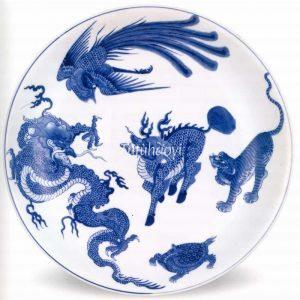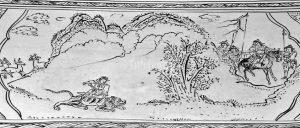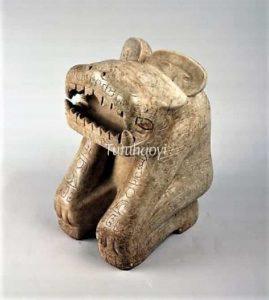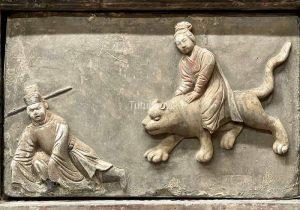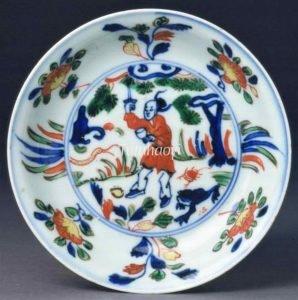Showing Results Containing
‘Wu Song slaying the tiger’ is a popular fictional story among Chinese people. But it’s hardly noticed that this story scene has been chosen in Chinoiserie decorative art in Europe. Here is Dr Yibin Ni’s interesting research and his unique insight...
Dragon and phoenix are commonly seen motifs in Chinese visual culture. Tiger, qilin and tortoise, at the same time, are favoured creatures symbolic for auspice. But when the motifs of the above five beasts are combined together, they have more mea...
‘Yang Xiang trying to throttle the tiger to rescue her father’ is a well-known story passed down from generation to generation in ancient China. However, Yang Xiang has sometimes been portrayed as a male figure on traditional Chinese artworks. Let...
2022 is the year of Tiger according to Chinese lunar calendar. Dr Yibin Ni has conducted a research overview of the pictorial representation of the tiger in the background of Chinese culture and history, from the origin of its motif in relics to v...
On Duanwu Festival, Chinese people have a variety of practices, such as drinking rice wine sprayed with realgar powder and hanging images of the Heavenly Master on the lintel. Where did this tradition come from and how were these practices depicte...
The true name of Guiguzi (鬼谷子) remains unknown due to insufficient historical records, although some suggest the name ‘Wang Yi’. Legend has it that Guiguzi was a figure from the Warring States period (475–221 BCE), renowned as both a recluse and a political thinker, strategist, and Daoist. He is considered the founder of...
This is Scene One of Act Two of the Chinese classic popular drama Romance of the Western Chamber (西厢记 Xixiang Ji), written by the Yuan playwright Wang Shifu (125...
Nicknamed xingzhe (行者), ‘Pilgrim’ or ‘Traveller’, Wu Song (武松) is a popular fictional figure well-known for his slaying a tiger single-handedly after he was into...
One day during the Tang dynasty (618-907), Li Keyong (李克用, 856-908), the Prince of Jin (晋王), went out hunting with an entourage of dozens of soldiers, when he encountered a woodcutter in a quiet valley. The woodcutter told Li that The Flying Tiger Hill nearby was an ideal hunting ground. The prince told him that he had d...
The tiger has impressed the Chinese for being ferocious, valiant, and awesome. Numerous imaginations, legends, and images have been stimulated by the fascinating impact of this majestic beast on the nation’s psyche ever since antiquity.
Shuowen jiezi (说文解字), or Explanations of Simple Graphs and Analys...
Early in Jin dynasty (晋 265–420), Yang Feng 杨丰 and his teenage daughter, Yang Xiang 杨香, were harvesting the millet crops in the fields when he was attacked by a tiger. Th...
In traditional Chinese customs, the fifth day of the fifth month of the lunisolar calendar is regarded as one of the most dangerous days of the year when evil spirits and hazardous creatures lurked around. Notably, five noxious creatures were identified, known as ‘Continue Reading
